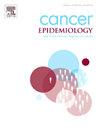从1990年到2021年,按地区、年龄和性别划分的全球年轻发病气管、支气管和肺癌负担的分布和趋势:一项年龄期队列分析
IF 2.4
3区 医学
Q3 ONCOLOGY
引用次数: 0
摘要
背景:年轻发病的气管、支气管和肺癌(TBLC)表现出明显的基因突变和临床特征。随着空气污染的恶化,年轻发病的TBLC发病率不断上升,造成了巨大的经济负担。疾病负担的具体流行病学仍然难以捉摸。方法:采用更新的全球疾病负担(GBD) 2021研究。本研究报道了年轻TBLC(≤54岁)的疾病负担趋势及其危险因素。数据以每10万人中不同年龄组、年龄、性别、社会人口水平(SDI)和地理位置(全球、地区和国家)的计数和年龄标准化率(ASRs)的形式呈现。采用年龄-时期-队列(APC)模型分析青年TBLC的年龄、时期和队列效应的纵向曲线。分解分析将时间变化分解为人口老龄化、人口增长和流行病学变化三个因素,量化变化并确定其原因。采用不平等指数来检验1990年至2021年不同SDI水平下青年TBLC疾病负担的性别不平等。结果:从1990年到2021年,全球55岁以下诊断为TBLC的人数从320,715人增加到489,080人,增长了52. %。然而,年龄标准化患病率(平均年变化率(AAPC) -0.05 %)、发病率(AAPC -0.59 %)、死亡率(AAPC -0.88 %)和残疾调整生命年(AAPC -0.92 %)均呈显著下降趋势。2021年,青少年TBLC新诊断为258,360例,死亡人数为207,000例,asr发病率和死亡率分别为6.43 / 10万和5.49 / 10万。从区域来看,东亚负担最重,约有117,730例年轻TBLC新病例,ASR为每10万人12.01例。分解分析表明,人口增长是青年TBLC患病率上升的主要驱动因素。虽然全球范围内与烟草有关的青少年TBLC伤残调整寿命有所下降,但烟草仍然是主要风险因素。相比之下,与空气污染相关的DALYs在中低SDI地区显著增加。在过去二十年中,年轻女性的TBLC负担大幅增加,2021年观察到的不平等加剧。烟草是高SDI区域年轻女性DALYs PAF的最大贡献者,而空气污染是其他SDI区域的主要贡献者。结论:虽然青年TBLC病例总数呈上升趋势(主要是由于人口变化),但在过去20年中,青年TBLC负担的asr有所下降。2021年,东亚青年TBLC的流行率、发病率和死亡率最高。烟草仍然是青少年TBLC的主要危险因素,烟草使用造成的伤残调整生命年负担已显著减少。然而,在过去二十年中,非吸烟年轻女性的TBLC发病率迅速增长,主要原因是空气污染,导致不平等加剧。本文章由计算机程序翻译,如有差异,请以英文原文为准。
Distributions and trends in the global burden of young-onset tracheal, bronchus, and lung cancer by region, age, and sex from 1990 to 2021: An age-period-cohort analysis
Background
The young onset Tracheal, Bronchus, and Lung Cancer (TBLC) exhibits distinct gene mutations and clinical characteristics. With worsening air pollution, the incidence of young onset TBLC is increasing, resulting in significant economic burdens. The specific epidemiology of the disease burden remains elusive.
Methods
The updated Global Burden of Disease (GBD) 2021 study was employed. This study reports on the disease burden trends of young TBLC (≤54 years) and its risk factors. Data is presented as counts and age-standardized rates (ASRs) per 100,000 people across different age groups, years, sexes, sociodemographic levels (SDI), and geographic locations (global, regional, and national). An age-period-cohort (APC) model was used to analyze longitudinal curves on age, period, and cohort effects for young TBLC. Decomposition analysis broke down temporal changes into three factors: population aging, population growth, and epidemiological change, to quantify the changes and identify their causes. An inequality index was applied to examine the inequality of disease burden of young TBLC by sex across different SDI levels between 1990 and 2021.
Results
From 1990–2021, the global number of individuals under 55 diagnosed with TBLC increased from 320,715 to 489,080, representing a 52 % rise. However, the age-standardized rates of prevalence (Average annual percentage changes (AAPC) −0.05 %), incidence (AAPC −0.59 %), mortality (AAPC −0.88 %), and disability-adjusted life-years (DALYs) (AAPC −0.92 %) all showed a notable decline tendency. In 2021, there were 258,360 new diagnoses and 207,000 deaths from young TBLC, with ASRs of incidence and mortality at 6.43 and 5.49 per 100,000, respectively. Regionally, East Asia bore the highest burden, with about 117,730 new young TBLC cases and an ASR of 12.01 per 100,000 people. Decomposition analysis indicated that population growth was the primary driver for the increased prevalence of young TBLC. While tobacco-related DALYs for young TBLC decreased globally, tobacco remains the leading risk factor. In contrast, air pollution-related DALYs have significantly increased in middle and lower SDI regions. Over the past two decades, the burden of young TBLC among females has grown substantially, with increased inequality observed in 2021. Tobacco was the largest contributor to the PAF of young female DALYs in high SDI regions, whereas air pollution was the leading contributor in other SDI regions.
Conclusion
While the total number of young TBLC cases has been on the rise trend, primarily due to population changes, the ASRs of young TBLC burdens have decreased over the past two decades. In 2021, East Asia recorded the highest ASRs for young TBLC in terms of prevalence, incidence, and mortality. Tobacco remains the primary risk factor for young TBLC, and the DALYs burden from tobacco use has significantly decreased. However, the incidence of TBLC among non-smoking young females has grown rapidly over the past two decades, mainly due to air pollution, leading to increased inequality.
求助全文
通过发布文献求助,成功后即可免费获取论文全文。
去求助
来源期刊

Cancer Epidemiology
医学-肿瘤学
CiteScore
4.50
自引率
3.80%
发文量
200
审稿时长
39 days
期刊介绍:
Cancer Epidemiology is dedicated to increasing understanding about cancer causes, prevention and control. The scope of the journal embraces all aspects of cancer epidemiology including:
• Descriptive epidemiology
• Studies of risk factors for disease initiation, development and prognosis
• Screening and early detection
• Prevention and control
• Methodological issues
The journal publishes original research articles (full length and short reports), systematic reviews and meta-analyses, editorials, commentaries and letters to the editor commenting on previously published research.
 求助内容:
求助内容: 应助结果提醒方式:
应助结果提醒方式:


